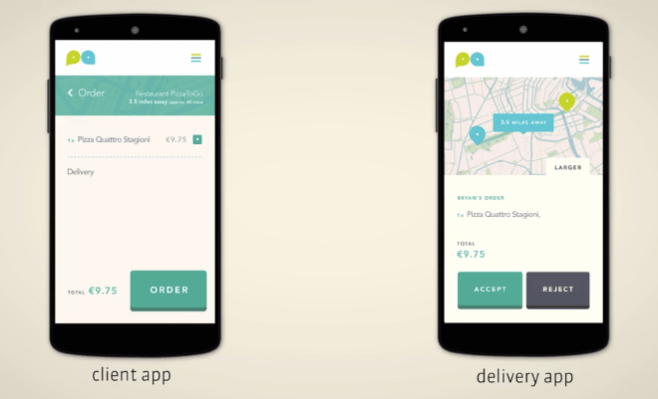Order stuff to your phone not your home is the pitch for this Belgian app, built for mobile carrier BASE by comms agency DDB — and launched last week in a test phase. It’s mostly an experiment right now, and is limited to domestic deliveries at present, but the agency reckons its concept of ‘Uber for on-demand deliveries’ could go far.
Uber is also interested in deliveries of course, which will likely affect how far others get in this space. But safe to say the starting gun for deliveries to your phone has been fired. Swap out human couriers for driverless cars and delivery drones and the frictionless vista of push-button everywhere ecommerce beckons. Albeit we’re a ways off that yet.
“In the test phase we are working with Royal Delivery, a food delivery company but talks with other partners in different sectors are ongoing,” says DDB. “The goal is to facilitate the life of people who want to live a truly mobile life. Because waiting at home for a delivery, that’s just stupid in times where everyone is on the go and everything is mobile.”
BASE has more than three million customers. It’s not looking to directly monetize deliveries booked via the app, so no additional charges are added on top of whatever the restaurant normally charges. This is just about incentivizing people to rely on their phones even more.
As the on-demand economy seeks to shave off ever more incremental barriers to consumer gratification any kind of immoveable becomes objectionable to the money makers — such as having a delivery address that’s fixed to a permanent abode. Cynics might say it’s a ‘belong nowhere, shop everywhere’ world these disruptors are aiming to build.
Users of PhoneAddress, as the Belgian app is called, are shown their location on a map, and offered various local food delivery options which they can order to come to wherever they are. The app lets them track their courier’s progress with their delivery — so they’re notified when the order is being prepared. And when it’s on its way they see a map view of the courier in real-time, much like Uber.
The location pinpointing works with GPS/4G, with the final few meters switching over to the age-old method of two people looking around to find each other — albeit, with buyer and courier able to see each other’s photo in the app so they can be recognized. If that fails, there’s a fallback option of a phone call.
